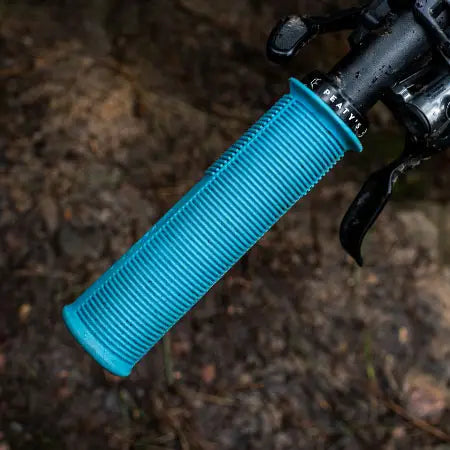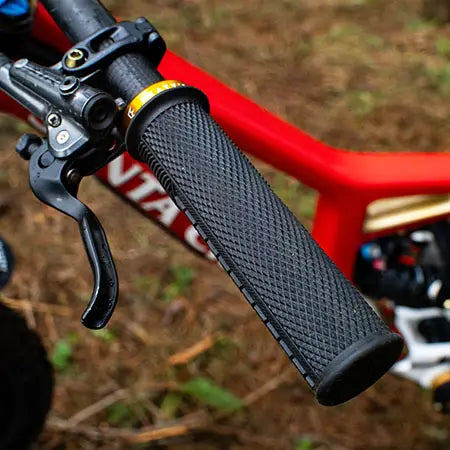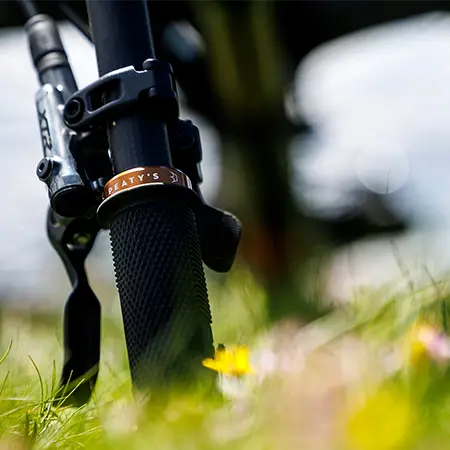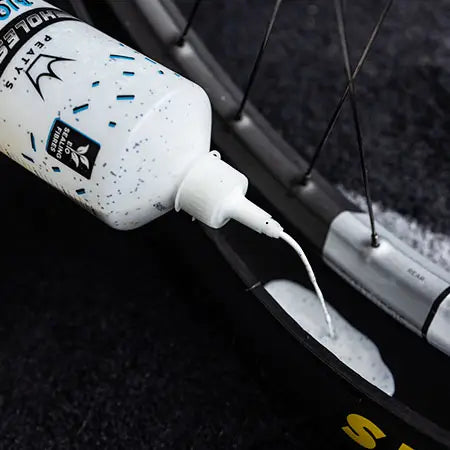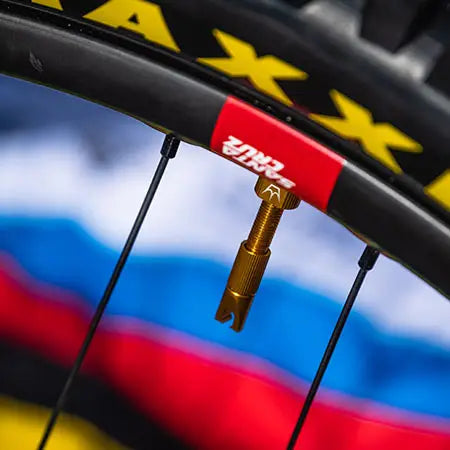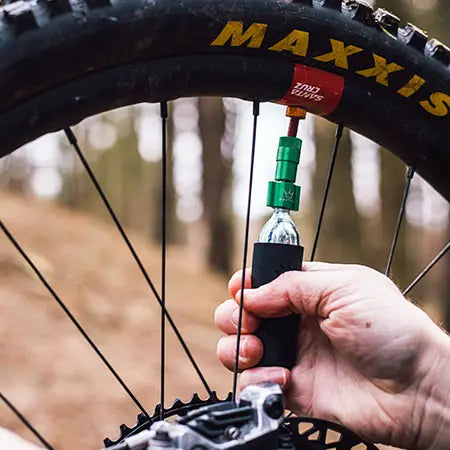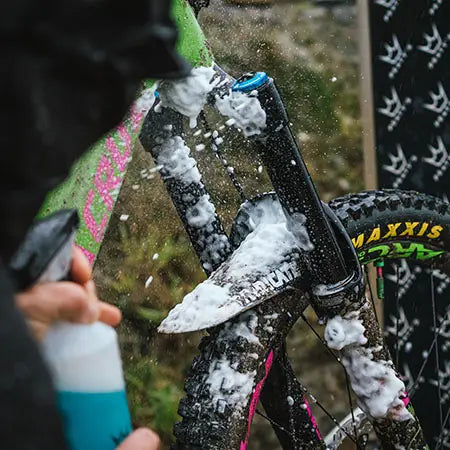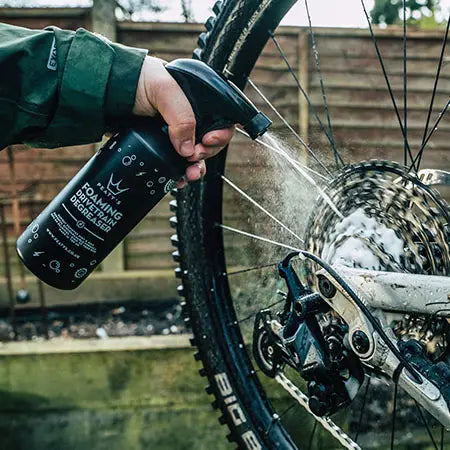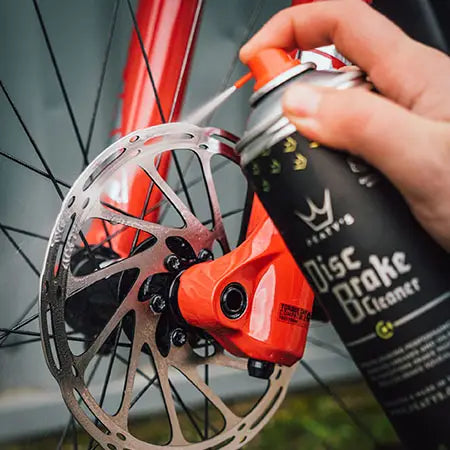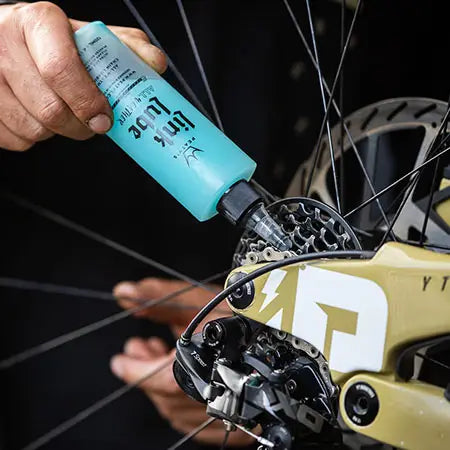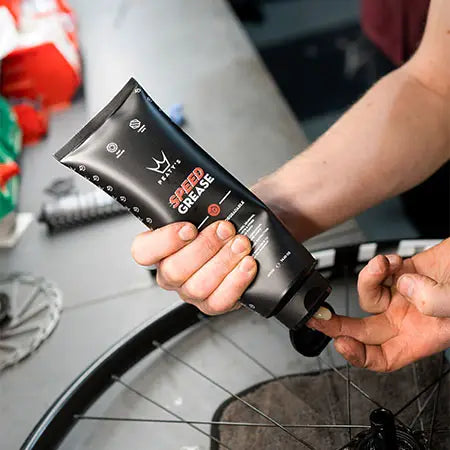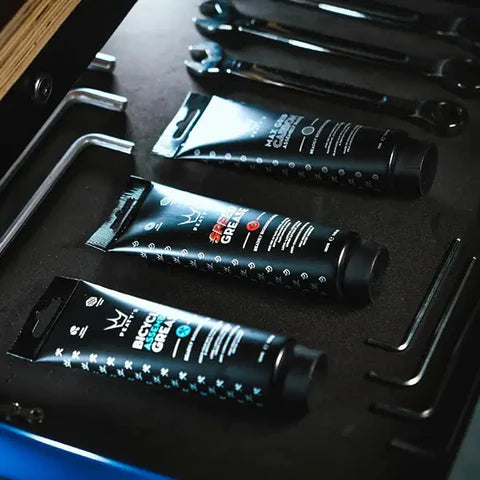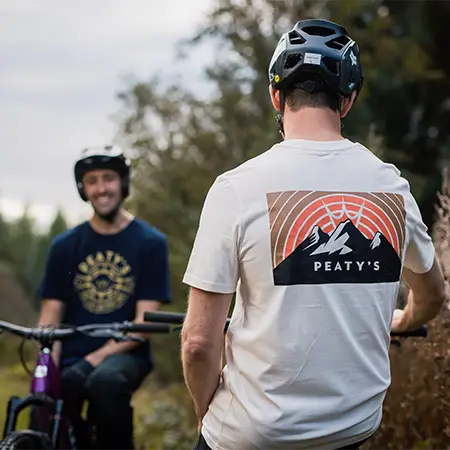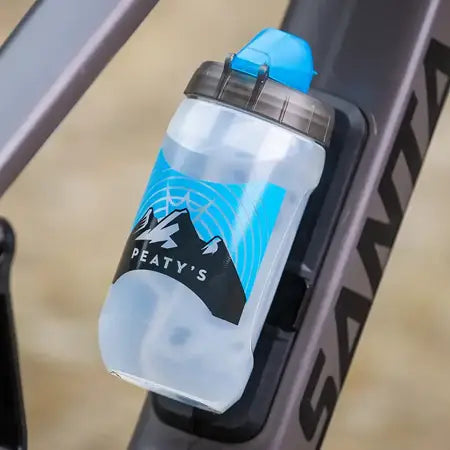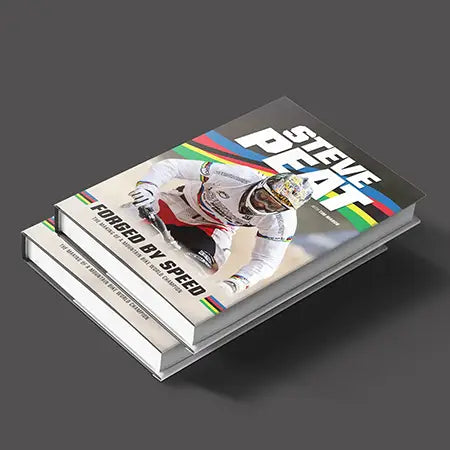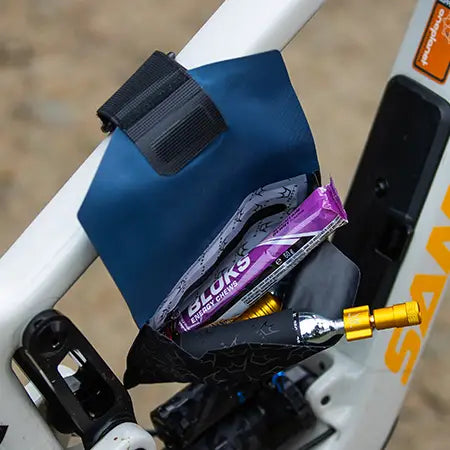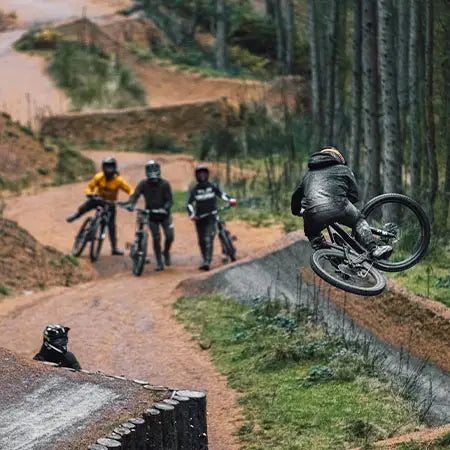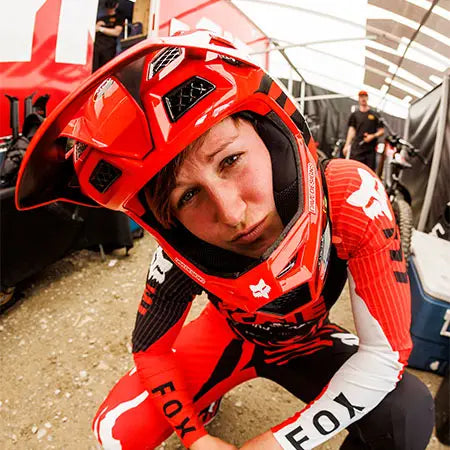The Whole Painful Peaty’s Sealant Story
If you’re heading to the loo for five minutes or just want to know how hard we worked to make the best puncture fighting fluid around, the full, painful Holeshot BioFibre Tubeless Tyre Sealant story is below.
In typical Peaty’s fashion we went all out with a unique formula for our original Tubeless Sealant and it’s mostly done us proud. We know the colourful glitter elements didn’t make everyone smile when it got spilt though. We also had a few duff batches that didn’t work as well as they should have done thanks to some unscrupulous contract manufacturers early on!
That left us with two choices: We could have just slopped the same sealant as most other brands sell into a bottle, slapped a Peaty’s label on it and gone to the pub early, knowing we’d never hear any moaning about ‘unicorn jizz’ ever again.
However, because we always want to create the best products we can, we decided to dig deep and make the best sealant we could by trying every possible solution. And frankly there were many times over the past couple of years we’d wished we hadn’t. Because testing, tweaking, refining countless different recipes using a vast range of potential puncture plugging and carrying solution elements was beyond exhausting. We even called in one of the most infamously independent product testers in the industry to act as our very own tire stabbing Stig and benchmark our mixes against every other brand.
And as much as we love finding solutions to rider’s problems we started wishing we hadn’t started. We had eureka moments with single batches we couldn’t repeat consistently at larger volume. We went fully deep dive on horse hair eco versions only to find they just didn’t work as well as microplastic alternatives. We mixed up recipes that were only 1% different but were somehow 10% worse and for a while we seemed to be going backwards more than forwards. We hated sealant, we hated our Stig, his murderous screwdriver onslaught and the disappointing data on his shanking spreadsheet. The pub plan seemed more like a great idea than ever.
But after three years and bottle after bottle after bottle after bottle of code labelled samples heading out of the Peaty’s lab to the Stig and other painfully honest testers we finally started getting somewhere.
The bio fibres we’d added were a game changer in terms of the overall speed and hole size sealing performance but we still had a great overall balance of usability. That meant the new mixes sealed better on initial inflation than the lightest road sealants. They plugged small holes as fast as the shank was removed, bubbled big holes shut in seconds and would even finish runs and then re-inflate with a 8mm stab wound - we only say 6mm on the packaging though just to be totally sure.
It coated see through carcasses on lightweight race tyres and skin walls. It sealed gravel and road tyres at pressures up to 120psi and it kept the snow bike of our Paralympic Champ ambassador Steve Bate at a perfect low teen PSI from blizzards to beach races.

